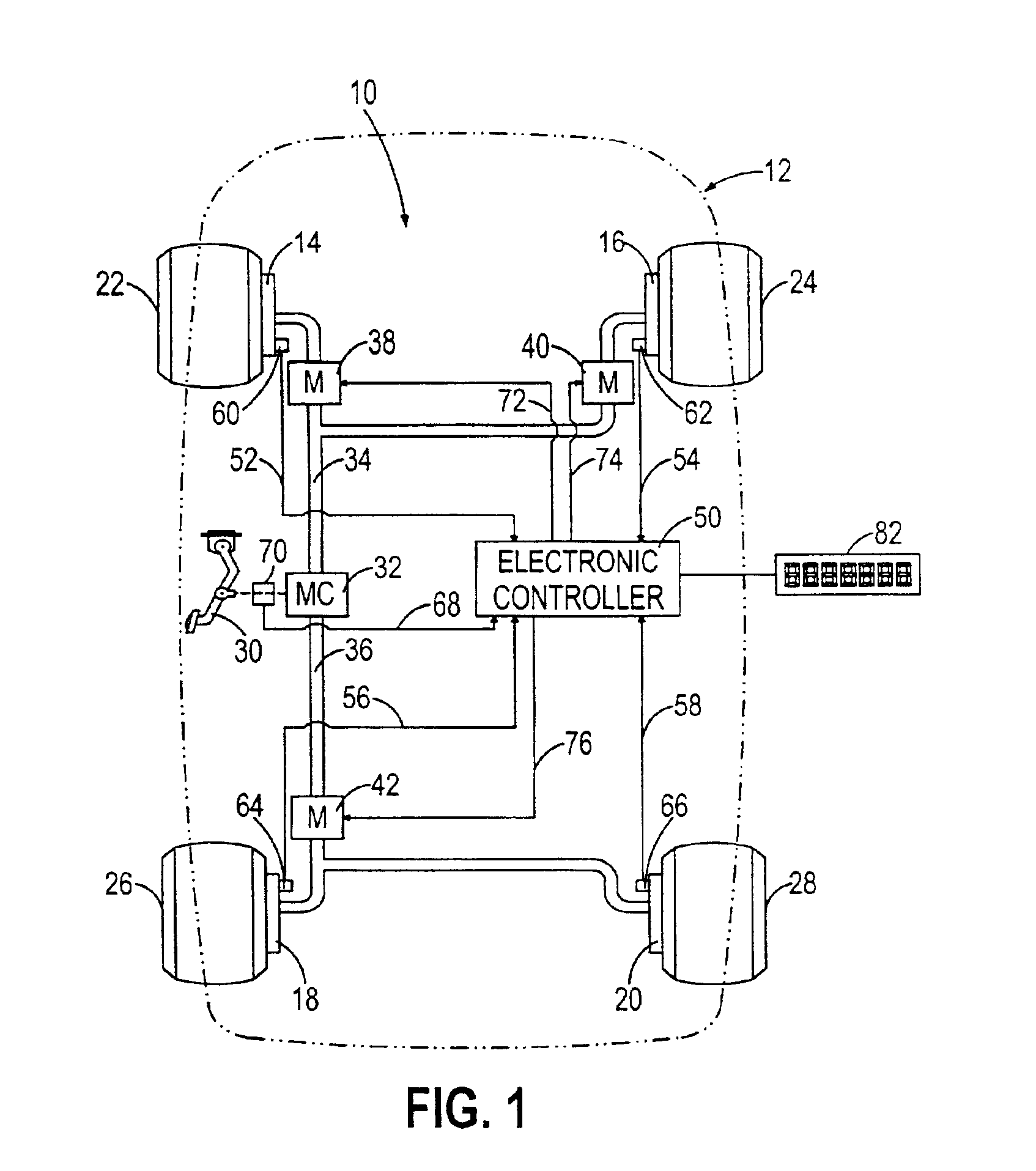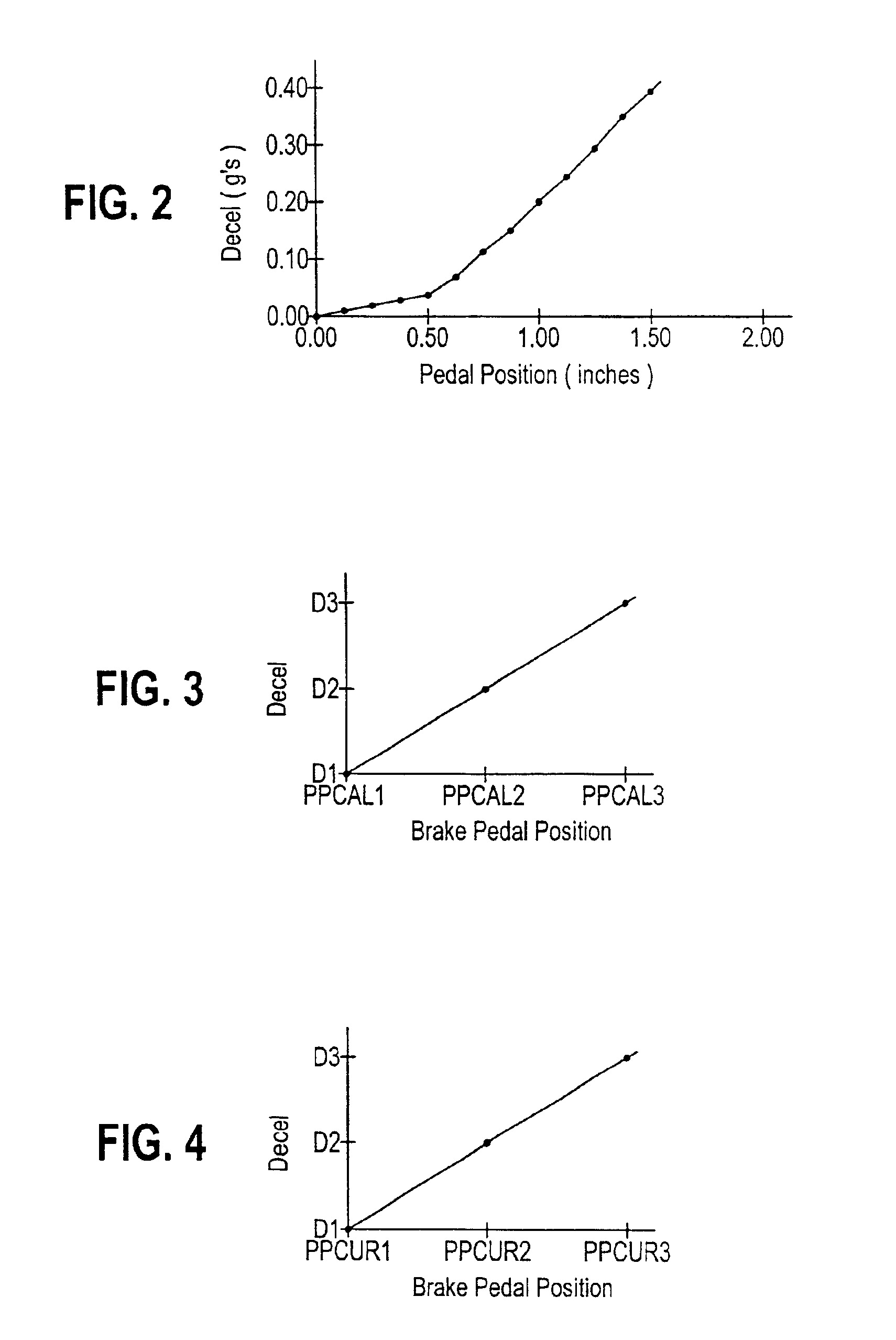Adaptive compensation method for an anti-lock brake control
- Summary
- Abstract
- Description
- Claims
- Application Information
AI Technical Summary
Benefits of technology
Problems solved by technology
Method used
Image
Examples
Embodiment Construction
Referring to FIG. 1, the present invention is disclosed in the context of an anti-lock braking system 10 for a vehicle 12 having hydraulically activated friction brakes 14, 16, 18, 20 at each of four vehicle wheels 22, 24, 26, 28. In mechanizations where the rear brakes 18, 20 are drum brakes, a self-adjusting mechanism (not shown) is included to compensate for brake shoe wear during braking while the vehicle 12 is backing up. A driver-manipulated brake pedal 30 is mechanically coupled to a master cylinder (MC) 32 for producing hydraulic pressure in proportion to the force applied to pedal 30. Master cylinder 32, which may include a pneumatic booster (not shown), proportions the hydraulic pressure between front and rear brake supply lines 34 and 36 in a conventional manner. Front supply line 34 is coupled to the left front service brake 14 via left-front anti-lock modulator (M) 38, and to the right front service brake 16 via right-front anti-lock modulator (M) 40. Rear supply line 3...
PUM
 Login to View More
Login to View More Abstract
Description
Claims
Application Information
 Login to View More
Login to View More - R&D
- Intellectual Property
- Life Sciences
- Materials
- Tech Scout
- Unparalleled Data Quality
- Higher Quality Content
- 60% Fewer Hallucinations
Browse by: Latest US Patents, China's latest patents, Technical Efficacy Thesaurus, Application Domain, Technology Topic, Popular Technical Reports.
© 2025 PatSnap. All rights reserved.Legal|Privacy policy|Modern Slavery Act Transparency Statement|Sitemap|About US| Contact US: help@patsnap.com



